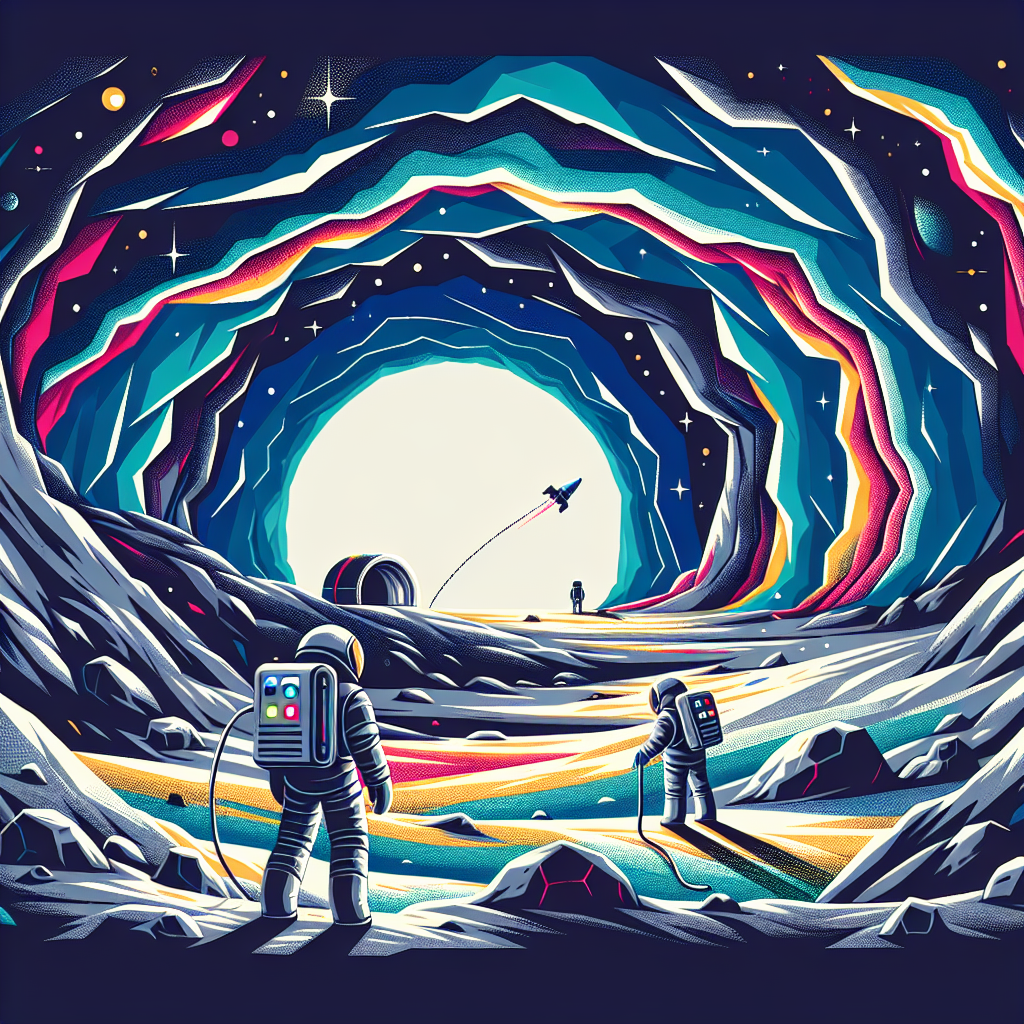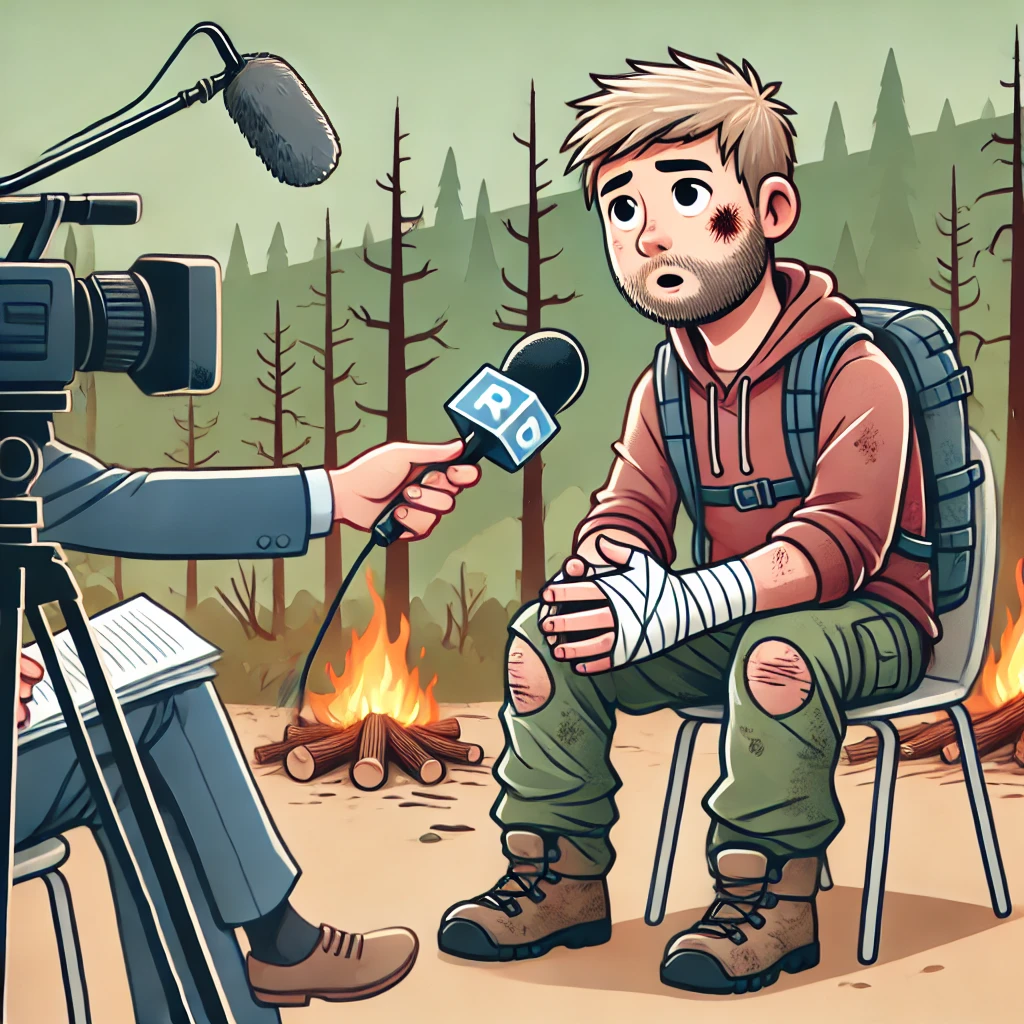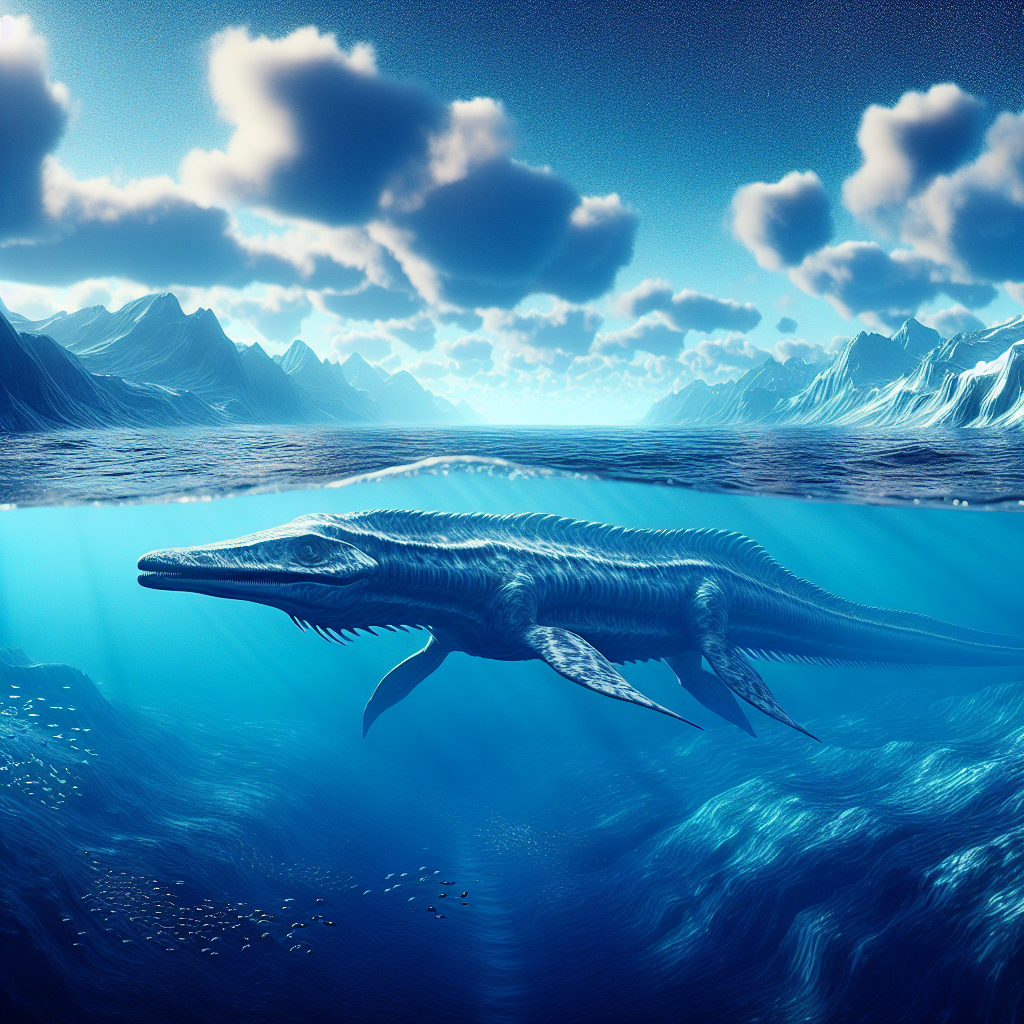A recent discovery has shown that there is a cave on the Moon, which is a big step in exploring our lunar neighbor. This cave is believed to be at least 100 meters deep and raises exciting possibilities for building a permanent human base on the Moon. Scientists think that this cave could be one of many hidden underground, creating an “undiscovered world” on the Moon. As different countries work to establish a long-term human presence on the Moon, finding safe places to live that protect against radiation, extreme temperatures, and harsh space conditions is becoming more important.
Helen Sharman, the first British astronaut in space, is hopeful about the cave being a good spot for future lunar living. She believes that humans could potentially live in these caves within the next 20 to 30 years. However, she also mentioned that getting in and out of the cave might be tricky for astronauts, who may need special tools like jet packs or lifts. This shows how complicated exploring the Moon can be and how creative solutions will be needed for humans to live there successfully.
The cave was found by researchers Lorenzo Bruzzone and Leonardo Carrer from the University of Trento in Italy. They used radar technology to study a pit on the Mare Tranquillitatis, which is a rocky area where Apollo 11 landed in 1969. The cave has a skylight at the top, with steep walls and a sloping floor that might go even deeper underground. Scientists believe this cave formed millions or even billions of years ago from ancient lava flows, making it similar to volcanic caves we see on Earth, like those in Lanzarote, Spain.
The researchers are excited about what this discovery means for exploring the Moon and learning more about its history. Prof. Carrer pointed out that being among the first to see such a unique feature is important, especially since life on Earth began in caves. They hope to use advanced technologies, like ground-penetrating radar and robots, to explore the inside of the cave more thoroughly. This discovery not only suggests that humans might live on the Moon but also helps us understand the Moon’s past and could even lead to exploring caves on Mars, where we might find signs of past life. As we continue to explore the Moon, this cave discovery could greatly change how we view both the Moon and the possibility of life beyond our planet.
Original news source: Cave discovered on Moon could be home for humans (BBC)
🎧 Listen:
Slow
Normal
Fast
📖 Vocabulary:
| 1 | discovery | Finding something new or previously unknown |
| 2 | lunar | Related to the Moon |
| 3 | permanent | Lasting forever or for a very long time |
| 4 | radiation | Energy that comes from a source and travels through space |
| 5 | astronaut | A person trained to travel and work in space |
| 6 | complicated | Difficult to understand or deal with |
| 7 | researchers | People who study and investigate to learn new things |
| 8 | radar | A system that uses radio waves to find objects and their positions |
| 9 | skylight | An opening in the roof that lets in light |
| 10 | sloping | Inclined or at an angle |
| 11 | lava | Hot, melted rock that comes from a volcano |
| 12 | volcanic | Related to or caused by a volcano |
| 13 | feature | A distinctive or important part of something |
| 14 | advanced | Highly developed or complex |
| 15 | thoroughly | In a detailed and complete way |
Group or Classroom Activities
Warm-up Activities:
– NEWS SUMMARY
Instructions: Divide the class into small groups. Each group reads the article and summarizes it in their own words, focusing on the main points and key details. Afterward, each group presents their summary to the class.
– OPINION POLL
Instructions: Create a series of statements related to the article, such as “Humans should live on the Moon” or “Exploring caves on other planets is essential.” Students walk around the room and ask their classmates for their opinions, tallying responses for each statement.
– SKETCH IT
Instructions: Give each student a part of the article to illustrate without using words. After a set time, students present their sketches to the class, explaining how their drawing relates to the content of the article.
– THINK-PAIR-SHARE
Instructions: Pose a question related to the article, such as “What challenges do you think astronauts will face living in lunar caves?” Students think about their answers individually, then pair up to discuss before sharing their thoughts with the whole class.
– FUTURE PREDICTIONS
Instructions: Ask students to make predictions about what life on the Moon might look like in 20-30 years based on the article. They can write down their predictions and then share them in small groups, discussing the feasibility and implications of their ideas.
🤔 Comprehension Questions:
1. What recent discovery has scientists excited about the Moon?
2. How deep is the cave believed to be, and why is this significant for human exploration?
3. What challenges might astronauts face when trying to enter and exit the cave?
4. Who are the researchers that discovered the cave, and what technology did they use?
5. Why is the location of the cave, near Mare Tranquillitatis, historically important?
6. How do scientists believe the cave was formed, and what does it have in common with caves on Earth?
7. What advanced technologies do researchers plan to use to explore the cave more thoroughly?
8. In what ways could this cave discovery impact our understanding of the Moon and life beyond Earth?
Go to answers ⇩
🎧✍️ Listen and Fill in the Gaps:
A recent (1)______ has (2)______ that there is a cave on the Moon, which is a big step in exploring our (3)______ neighbor. This cave is believed to be at least 100 (4)______ deep and raises exciting possibilities for building a permanent human base on the Moon. Scientists think that this cave could be one of many hidden underground, creating an “undiscovered world” on the Moon. As different countries work to establish a long-term human presence on the Moon, finding safe places to live that protect against radiation, extreme temperatures, and harsh space conditions is becoming more important.
Helen Sharman, the first British (5)______ in space, is hopeful about the cave being a good spot for future lunar living. She believes that humans could potentially live in these caves within the next 20 to 30 years. However, she also mentioned that getting in and out of the cave might be tricky for astronauts, who may need special tools like jet (6)______ or lifts. This shows how complicated exploring the Moon can be and how creative (7)______ will be needed for humans to live there successfully.
The cave was found by researchers (8)______ Bruzzone and Leonardo Carrer from the University of Trento in Italy. They used radar technology to study a pit on the Mare Tranquillitatis, which is a rocky area where Apollo 11 landed in 1969. The cave has a skylight at the top, with steep walls and a sloping floor that might go even deeper underground. Scientists believe this cave formed (9)______ or even billions of years ago from ancient lava (10)______, making it similar to volcanic caves we see on Earth, like those in (11)______, Spain.
The researchers are excited about what this discovery means for exploring the Moon and learning more about its history. Prof. (12)______ pointed out that being among the first to see such a (13)______ feature is important, especially since life on Earth (14)______ in caves. They hope to use (15)______ technologies, like ground-penetrating radar and robots, to explore the inside of the cave more thoroughly. This discovery not only suggests that humans might live on the Moon but also helps us understand the Moon’s past and could even lead to exploring caves on Mars, where we might find (16)______ of past life. As we continue to explore the Moon, this cave discovery could greatly change how we view both the Moon and the possibility of life beyond our planet.
Go to answers ⇩
💬 Discussion Questions:
Students can ask a partner these questions, or discuss them as a group.
1. What is your opinion on the idea of humans living on the Moon?
2. How would you feel if you had the chance to visit the Moon?
3. Do you think exploring caves on the Moon is important? Why or why not?
4. What is a challenge you think astronauts might face when living in a cave on the Moon?
5. Do you like the idea of using advanced technology, like robots, to explore space? Why?
6. How would you feel if you could be one of the first people to live on the Moon?
7. What do you think are the benefits of having a permanent human base on the Moon?
8. Do you think there could be life on other planets, like Mars? Why or why not?
9. What is a place on Earth that you think is similar to the caves being discovered on the Moon?
10. How would you feel about using jet packs or special tools to explore a cave?
11. Do you think it’s important to learn about the history of the Moon? Why?
12. What is a scientific discovery that you find fascinating?
13. How would you feel if you could choose to be an astronaut?
14. Do you think countries should work together to explore space? Why or why not?
15. What is your dream destination in space, and why would you want to go there?
Individual Activities
📖💭 Vocabulary Meanings:
Match each word to its meaning.
Words:
1. discovery
2. lunar
3. permanent
4. radiation
5. astronaut
6. complicated
7. researchers
8. radar
9. skylight
10. sloping
11. lava
12. volcanic
13. feature
14. advanced
15. thoroughly
Meanings:
(A) A person trained to travel and work in space
(B) Inclined or at an angle
(C) Hot, melted rock that comes from a volcano
(D) Difficult to understand or deal with
(E) Related to or caused by a volcano
(F) A distinctive or important part of something
(G) Finding something new or previously unknown
(H) Related to the Moon
(I) In a detailed and complete way
(J) Energy that comes from a source and travels through space
(K) An opening in the roof that lets in light
(L) Highly developed or complex
(M) A system that uses radio waves to find objects and their positions
(N) People who study and investigate to learn new things
(O) Lasting forever or for a very long time
Go to answers ⇩
🔡 Multiple Choice Questions:
1. What recent discovery was made on the Moon?
(a) A new planet
(b) A cave
(c) Water
(d) A spaceship
2. How deep is the cave believed to be?
(a) At least 50 meters
(b) At least 200 meters
(c) At least 100 meters
(d) At least 150 meters
3. Who is Helen Sharman?
(a) A scientist studying the Moon
(b) The first British astronaut in space
(c) A writer about space exploration
(d) An engineer designing lunar habitats
4. What technology did researchers use to find the cave?
(a) Telescope technology
(b) Satellite imaging
(c) Radar technology
(d) Laser scanning
5. Where is the cave located on the Moon?
(a) Sea of Tranquility
(b) Apollo 11 landing site
(c) Lunar Highlands
(d) Mare Tranquillitatis
6. What might be necessary for astronauts to access the cave?
(a) Space suits only
(b) Basic climbing gear
(c) No tools at all
(d) Special tools like jet packs or lifts
7. What do scientists hope to learn from exploring the cave?
(a) The Moon’s history
(b) How to build rockets
(c) How to grow food in space
(d) The weather on Mars
8. What future possibility does the cave discovery suggest?
(a) Humans might live on the Moon
(b) We will never return to the Moon
(c) We need to abandon space exploration
(d) Mars is uninhabitable
Go to answers ⇩
🕵️ True or False Questions:
1. The discovery of the cave could maintain our understanding of the Moon and even prevent exploring caves on Mars for signs of past life.
2. A cave has not been discovered on the Moon, which could hinder in establishing a permanent human base there.
3. Helen Sharman, the first British astronaut in space, is pessimistic about the potential for humans to live in these caves within the next 20 to 30 years.
4. The cave is estimated to be at most 100 meters deep and may be one of many unique formations on the Moon.
5. The cave was discovered by researchers from the University of Trento in Italy using radar technology.
6. Scientists believe that living in these caves could protect humans from radiation and extreme temperatures.
7. Researchers think the cave formed millions or billions of years ago from ancient lava flows, similar to volcanic caves on Earth.
8. The cave is located in the Mare Tranquillitatis, the same area where Apollo 11 landed in 1969.
Go to answers ⇩
📝 Write a Summary:
Write a summary of this news article in two sentences.
Check your writing now with the best free AI for English writing!
Writing Questions:
Answer the following questions. Write as much as you can for each answer.
Check your answers with our free English writing assistant!
1. What is the significance of the cave discovered on the Moon for future human exploration?
2. Why do scientists believe that living in the cave could protect humans from harsh conditions on the Moon?
3. What challenges might astronauts face when trying to enter and exit the cave, according to Helen Sharman?
4. How did researchers from the University of Trento find the cave, and what technology did they use?
5. In what ways could this cave discovery help us learn more about the Moon and even Mars?
✅ Answers
🤔✅ Comprehension Question Answers:
1. What recent discovery has scientists excited about the Moon?
Scientists have discovered a cave on the Moon, which raises exciting possibilities for building a permanent human base there.
2. How deep is the cave believed to be, and why is this significant for human exploration?
The cave is believed to be at least 100 meters deep, which is significant because it could provide a safe place for humans to live, protecting them from radiation and harsh space conditions.
3. What challenges might astronauts face when trying to enter and exit the cave?
Astronauts might face challenges in getting in and out of the cave, possibly needing special tools like jet packs or lifts to navigate the steep walls.
4. Who are the researchers that discovered the cave, and what technology did they use?
The cave was discovered by researchers Lorenzo Bruzzone and Leonardo Carrer from the University of Trento in Italy, who used radar technology to study a pit on the Moon.
5. Why is the location of the cave, near Mare Tranquillitatis, historically important?
The cave’s location near Mare Tranquillitatis is historically important because it is close to where Apollo 11 landed in 1969, marking a significant moment in space exploration.
6. How do scientists believe the cave was formed, and what does it have in common with caves on Earth?
Scientists believe the cave was formed from ancient lava flows millions or billions of years ago, making it similar to volcanic caves on Earth, like those found in Lanzarote, Spain.
7. What advanced technologies do researchers plan to use to explore the cave more thoroughly?
Researchers plan to use advanced technologies like ground-penetrating radar and robots to explore the inside of the cave more thoroughly.
8. In what ways could this cave discovery impact our understanding of the Moon and life beyond Earth?
This cave discovery could change how we view the Moon, suggesting that humans might live there and helping us understand the Moon’s past, which could even lead to exploring caves on Mars for signs of past life.
Go back to questions ⇧
🎧✍️✅ Listen and Fill in the Gaps Answers:
(1) discovery
(2) shown
(3) lunar
(4) meters
(5) astronaut
(6) packs
(7) solutions
(8) Lorenzo
(9) millions
(10) flows
(11) Lanzarote
(12) Carrer
(13) unique
(14) began
(15) advanced
(16) signs
Go back to questions ⇧
📖💭✅ Vocabulary Meanings Answers:
1. discovery
Answer: (G) Finding something new or previously unknown
2. lunar
Answer: (H) Related to the Moon
3. permanent
Answer: (O) Lasting forever or for a very long time
4. radiation
Answer: (J) Energy that comes from a source and travels through space
5. astronaut
Answer: (A) A person trained to travel and work in space
6. complicated
Answer: (D) Difficult to understand or deal with
7. researchers
Answer: (N) People who study and investigate to learn new things
8. radar
Answer: (M) A system that uses radio waves to find objects and their positions
9. skylight
Answer: (K) An opening in the roof that lets in light
10. sloping
Answer: (B) Inclined or at an angle
11. lava
Answer: (C) Hot, melted rock that comes from a volcano
12. volcanic
Answer: (E) Related to or caused by a volcano
13. feature
Answer: (F) A distinctive or important part of something
14. advanced
Answer: (L) Highly developed or complex
15. thoroughly
Answer: (I) In a detailed and complete way
Go back to questions ⇧
🔡✅ Multiple Choice Answers:
1. What recent discovery was made on the Moon?
Answer: (b) A cave
2. How deep is the cave believed to be?
Answer: (c) At least 100 meters
3. Who is Helen Sharman?
Answer: (b) The first British astronaut in space
4. What technology did researchers use to find the cave?
Answer: (c) Radar technology
5. Where is the cave located on the Moon?
Answer: (d) Mare Tranquillitatis
6. What might be necessary for astronauts to access the cave?
Answer: (d) Special tools like jet packs or lifts
7. What do scientists hope to learn from exploring the cave?
Answer: (a) The Moon’s history
8. What future possibility does the cave discovery suggest?
Answer: (a) Humans might live on the Moon
Go back to questions ⇧
🕵️✅ True or False Answers:
1. The discovery of the cave could maintain our understanding of the Moon and even prevent exploring caves on Mars for signs of past life. (Answer: False)
2. A cave has not been discovered on the Moon, which could hinder in establishing a permanent human base there. (Answer: False)
3. Helen Sharman, the first British astronaut in space, is pessimistic about the potential for humans to live in these caves within the next 20 to 30 years. (Answer: False)
4. The cave is estimated to be at most 100 meters deep and may be one of many unique formations on the Moon. (Answer: False)
5. The cave was discovered by researchers from the University of Trento in Italy using radar technology. (Answer: True)
6. Scientists believe that living in these caves could protect humans from radiation and extreme temperatures. (Answer: True)
7. Researchers think the cave formed millions or billions of years ago from ancient lava flows, similar to volcanic caves on Earth. (Answer: True)
8. The cave is located in the Mare Tranquillitatis, the same area where Apollo 11 landed in 1969. (Answer: True)
Go back to questions ⇧













